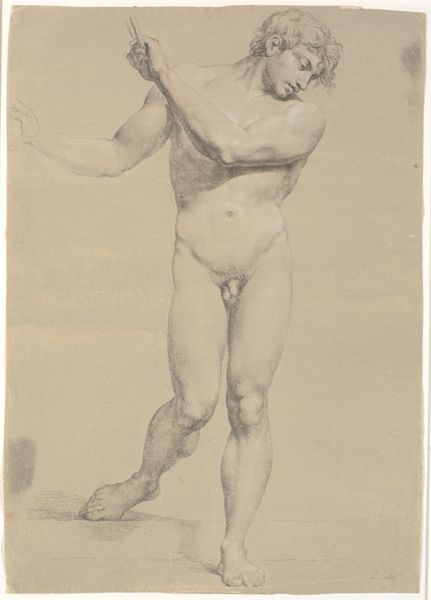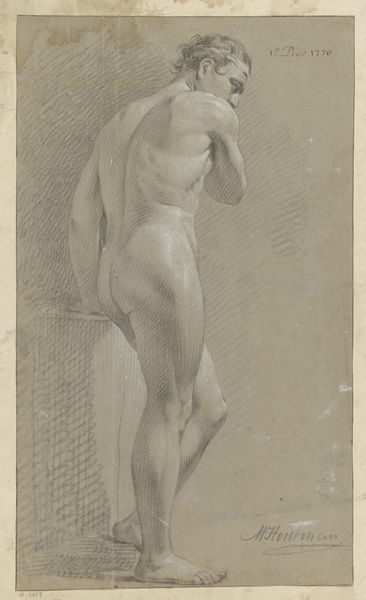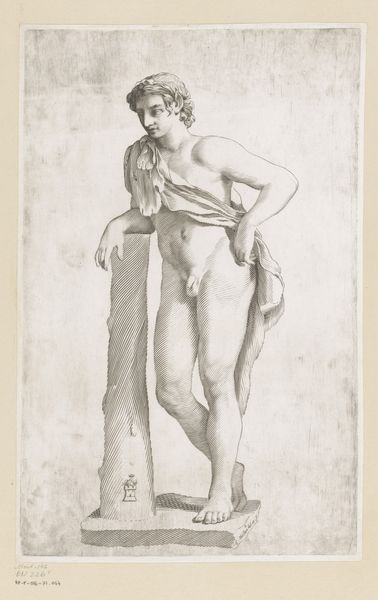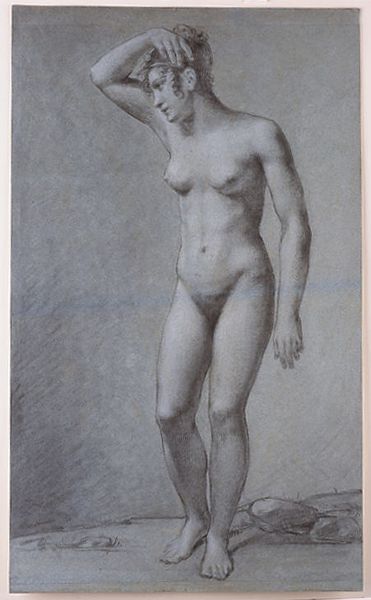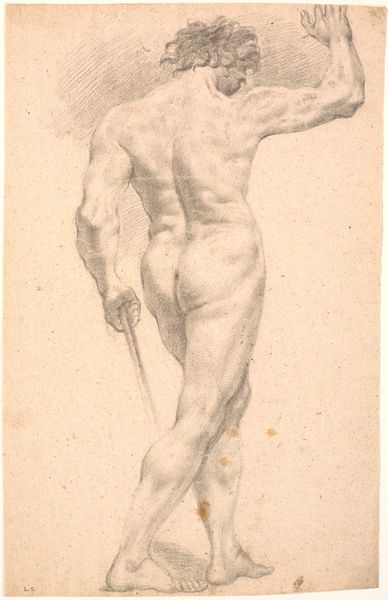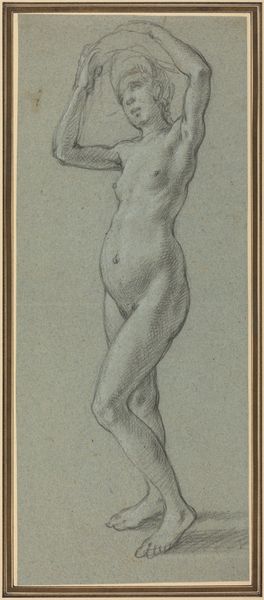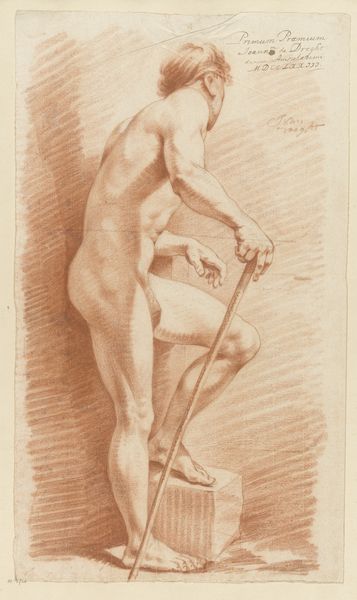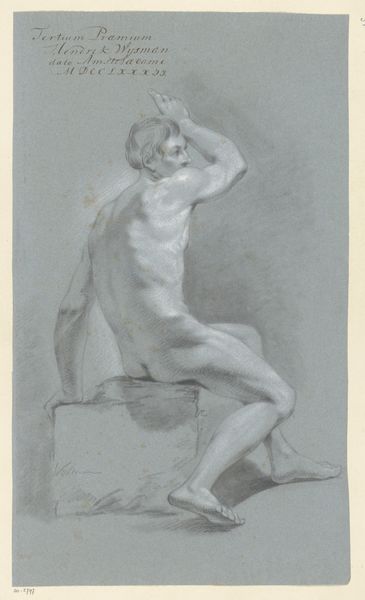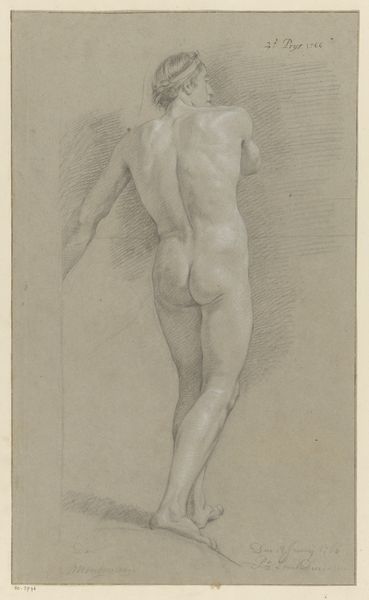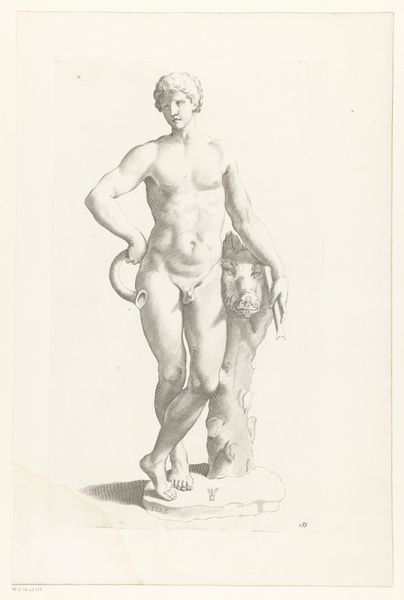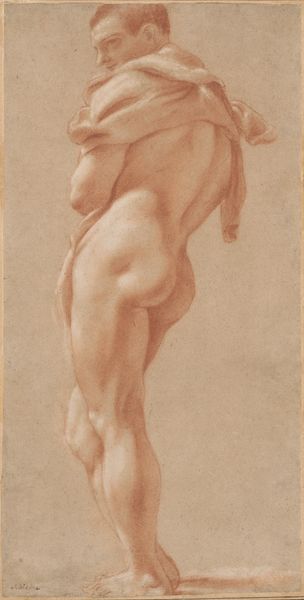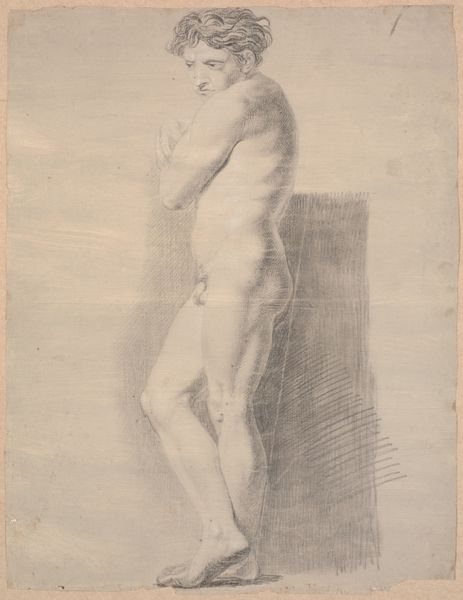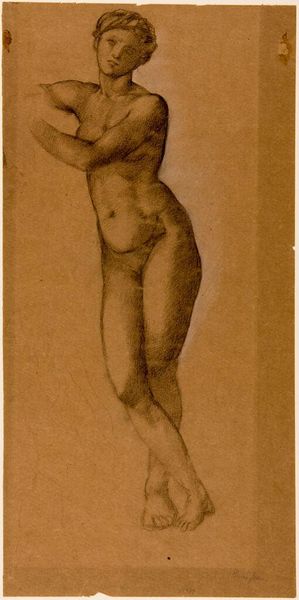
drawing, print, pencil
#
portrait
#
drawing
# print
#
classical-realism
#
figuration
#
11_renaissance
#
pencil drawing
#
pencil
#
history-painting
#
academic-art
#
nude
Dimensions: 16 1/2 x 10 13/16in. (41.9 x 27.4cm)
Copyright: Public Domain
Peter van Lint created this drawing of the Venus de' Medici in black and white chalk on blue paper while in Rome in 1640. It's a study of a famous antique sculpture, itself a Roman copy of a Greek original, which by this time was installed in the Uffizi Gallery in Florence and had become a key stop on the Grand Tour. The Venus de' Medici was more than just a beautiful statue; it represented a whole complex of ideas about classical beauty, artistic tradition, and the cultural authority of Italy. Northern European artists like Van Lint flocked to Italy to study these classical precedents, hoping to absorb the lessons of the past and bring them back home. We can see Van Lint grappling with these ideas in his drawing. On the one hand, he meticulously copies the statue's graceful pose and idealized form. On the other hand, he adds a skull at the statue's base, perhaps as a memento mori, a reminder of death's inevitability and the transience of earthly beauty. Art historians use a range of resources to understand the artwork's meaning, from archival documents to contemporary critical commentary. We can see how the meaning of art is always contingent on its social and institutional context.
Comments
No comments
Be the first to comment and join the conversation on the ultimate creative platform.

